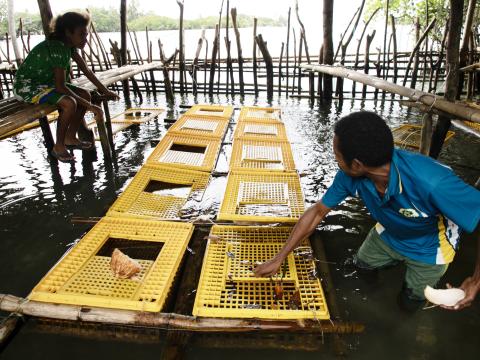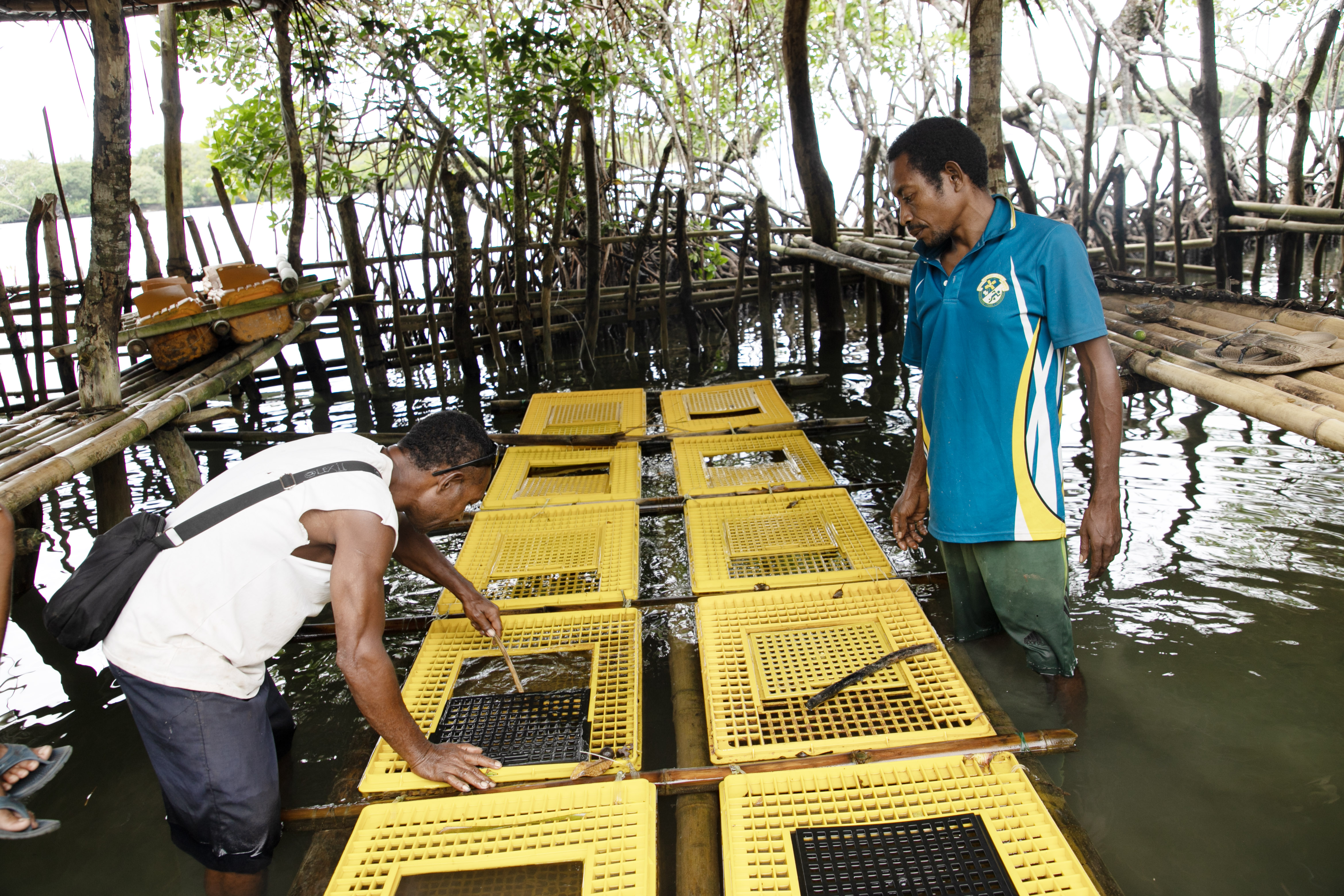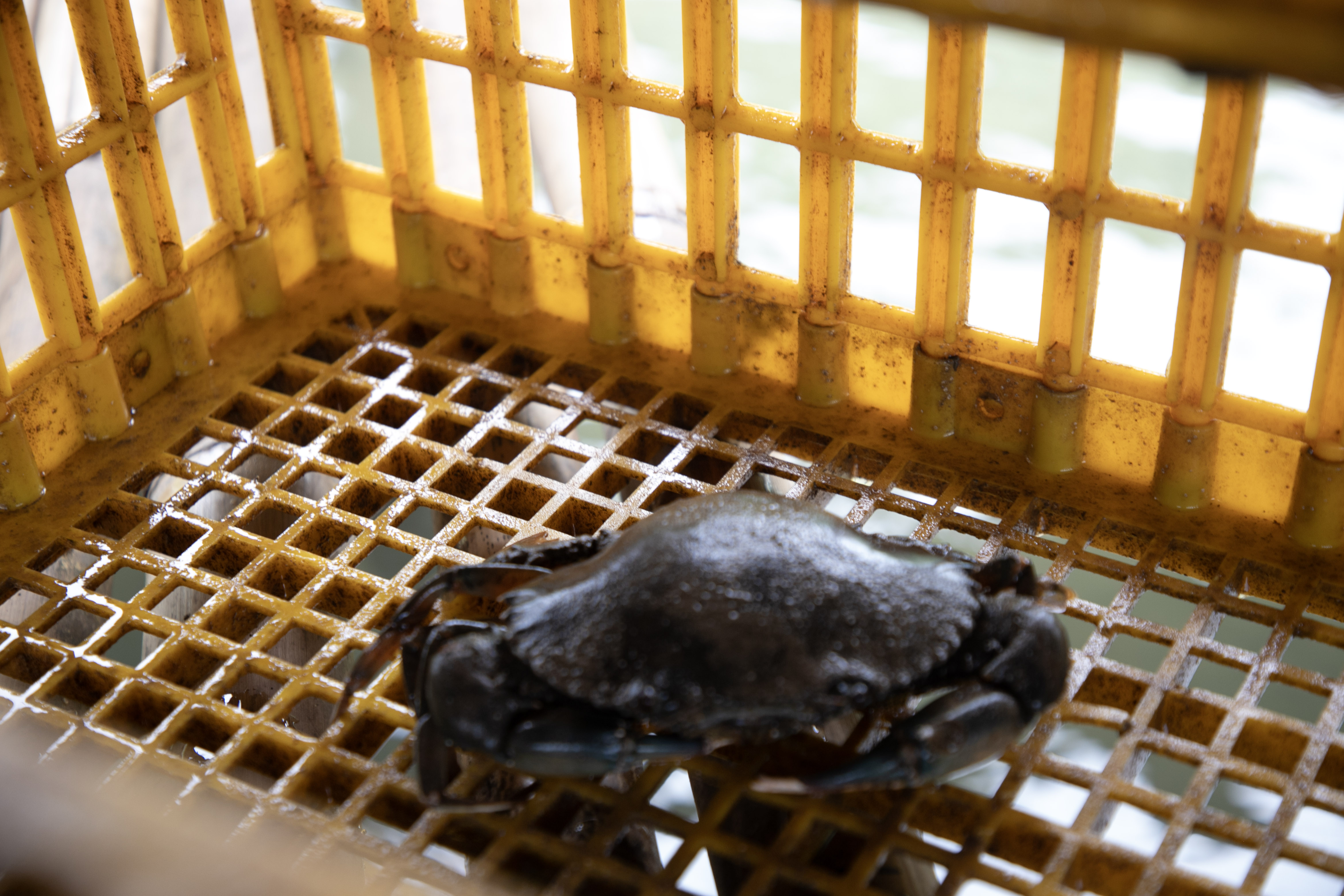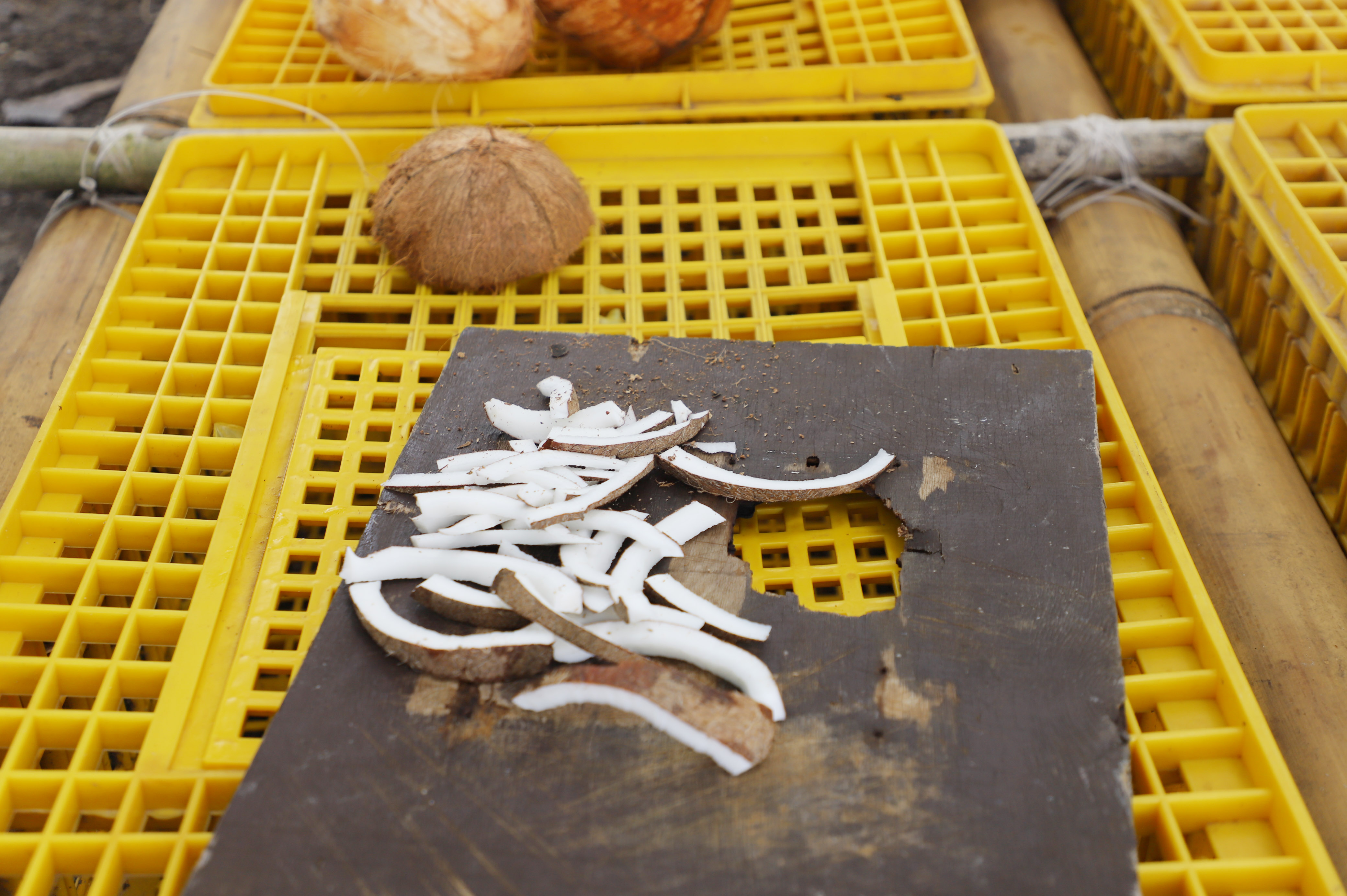Biodiversity & Conversation encouraged in Riwo through the mud crab fattening project.

“The staple food here in my village is yam, we get our protein from the sea. Over the years, I have seen the yam tuber dwindle in size, and now, if we want fish, we have to go further out to sea to catch them. Where once our fathers and grandfathers fished bountifully in this lagoon, there is no fish here anymore. We are forced to go out past the reef to the deep blue sea,” are the sombre remarks of Andrew Sil, a local of the Dauzagaz clan who are the local inhabitants of the Laugum area in Riwo.

Andrew’s mother is from the Dauzagaz clan, and his father is from Simbu, but he and his family now call Riwo their home. Andrew is also the elected chairman of the Community Representative Committee (CRC) in Word Vision led local biodiversity project in the area.
“Our livelihoods are heavily dependent on the sea. When we catch fish, it's for our family to consume and its also used to generate income through selling at the local market so that we can buy what we need to survive and live. Most of our income is derived from the sea and selling our catch at the market,” Andrew explains.
The biodiversity and marine conservation project is working closely with the 867 (project data from January 24th, 2024) strong Dauzagaz (dau-ROH-gar) clan members located in Riwoi Village, in Ward 6 of North Ambenob Local Level Government (LLG) of Madang Province whose homes straddle a small portion of the expansive Madang coastline of Papua New Guinea (PNG).
Riwo village is about 45 minutes out from Madang township and is quaintly nestled in Madang Lagoon which is part of the Laugum Marine Protected Area. The Laugum Marine Protected Area became a gazetted Wildlife Management Area (WMA) in 2006 when the local Dauzagaz clan inhabitants started to realize that the number of fish were declining and the human population was increasing, and the area's marine life needed to be protected.
This location was selected to host the World Vision-led project referred to by the locals as the ‘Mud Crab Fattening Project.’
Funded by the United Nations Development Program (UNDP), World Vision working with local government partners and the Provincial and National Fishery Authority, Conservation and Environment Protection Authority (CEPA) and the Dauzagaz Clan in Riwo, the project aims to protect and restore biodiversity, mangrove ecosystem function and enhance the resilience of vulnerable communities in Madang, specifically in Laugum Marine Protected Area.

As part of the project, a mud crab farm was constructed and mud crabs bought from Bogia district with the support of the Provincial Fisheries Authority were given to the clan to feed and then once ready for harvesting, would be sold by the National Fisheries Authority (NFA) in Madang and Port Moresby to an already established international market buyer in Malaysia and Singapore.
Through the crab farming, the Project aims to; strengthen sub-national and local governance for effective biodiversity conservation and; improved capacity on climate change adaptation and resilience within the fishery and marine-culture sectors whilst having an immediate effect on economically empowering the local community to diversify their income base.
“In the days of our grandfathers and great grandfathers only 2 to 3 generations ago, this expanse of sea in this lagoon was teaming with fish and so many different varieties of marine life. Today, there is no more fish and marine life here. The sea has come further inland and taken our land as where once we had mangroves to protect us, there is none now,” echoes John Tibong, a local originally from Manam Island who moved to Riwo more than 20 years ago after marrying a local lady and now lives as a permanent resident of the Dauzagaz clan.
As if on cue, a young man of twenty, maybe thirty years of age smiles and introduces himself, “my name is Raymond. I am 26 years old. I volunteered to help Andrew and the clan as the caretaker of the mud crab farm. My job is to feed the crabs, clean the cages, check their weights and generally look after the farm (in the sea and here on the land too),” he smiles.
Raymond explains as he understands his interpretation, “I am here because my parents were not able to pay my school fees so I couldn’t continue my education. Here in Riwo, we are very limited in what we can plant on the land, and our land is yielding smaller crops than what it did before. Our seas are overfished, and we have to go out much further to get fish. Fishing sustains our livelihoods and helps us to support ourselves financially. Much of this has to do with climate change. Our elders say that now we experience more harsher hotter months, the soil becomes to dry and crop yields smaller produce. And when it rains, it floods, and our sea level is rising and taking the land we used to grow our crops. Not only that, our population here is increasing and our fish are depleting, and we are really being affected here in Riwo.”
“From what I can see here with the farm and the mud crabs, there is a chance for us to plant mangroves, to help the crabs, and the crabs can also boost the eco system and some fish may return and our people will not be too dependent and overfish as well, instead we can look at the crabs for another viable income. Furthermore, Terry (Terry Gabby is the World Vision Biodiversity and Climate Adaptation Project Coordinator based in Madang) tells us that the NFA (National Fisheries Authority) already has a market and they will pay good money if we can get the crabs to a certain weight,” Raymond explains excitedly.
Although excited, he becomes more serious when he speaks on sustainability and short-term outlooks.
“At the moment, my biggest issue is the crab feed. Our committee here, Andrew and all of us involved in this project have urged our Dauzagaz clan to help with food scraps and fish scraps for crab feed. We have also approached the local fish cannery. But nothing. On a good night when I go out fishing, I can bring back some fish and feed the crabs some tailings. Coconuts do not grow here, therefore, I need to buy coconut to feed the crabs, and if I cannot afford that, then they go without food and this is part of the reason some of the crabs have died,” he explains in a sober tone.

“I am sure that if I can find some sustainable feed for the crabs, we can certainly fatten them up and have the 1st shipment ready for NFA to buy and export. That would be a wonderful day. When that happens, I have many plans I want to propose to Andrew and the committee of the project about how we can innovate and ramp up the farm for more output,” Raymond says as he motions towards the farm.
Terry Gabby, the World Vision Project Coordinator, reiterates the challenge of the community sustaining the project given the limited feed and limited community engagement and support.
“I have seen the commitment of the Mud Crab Fattening Committee and the community needs more engagement and awareness, and therefore, we are very much committed to seeing through this first batch of crabs and once we have fattened them up enough to sell to NFA, I am confident that the project will garner more community support and enthusiasm given its potential for so much including supporting the biodiversification of the Laugum area and climate adaption approaches taken here. We are aiming for the first sale by June this year so will be sure to let you know when this happens,” Terry beams.
